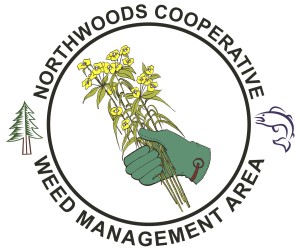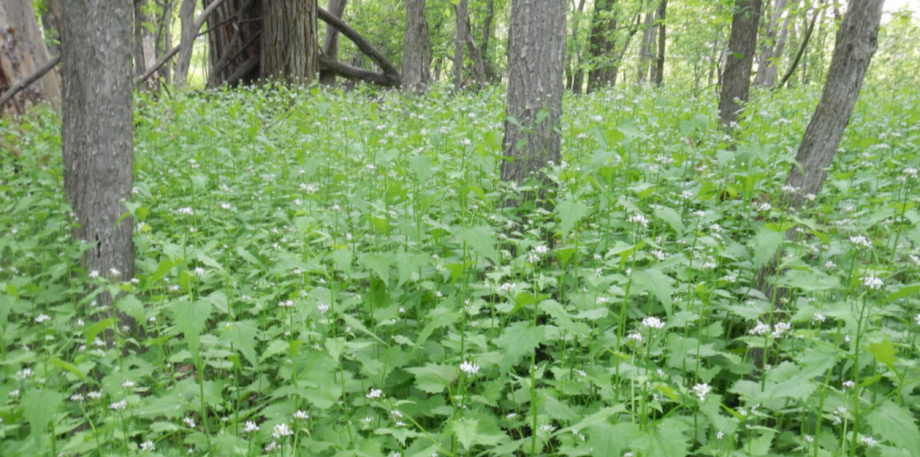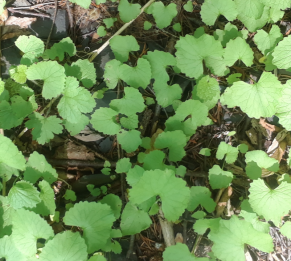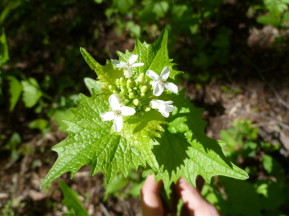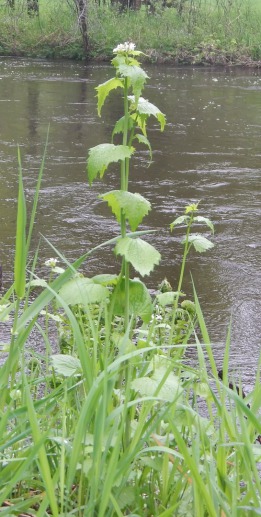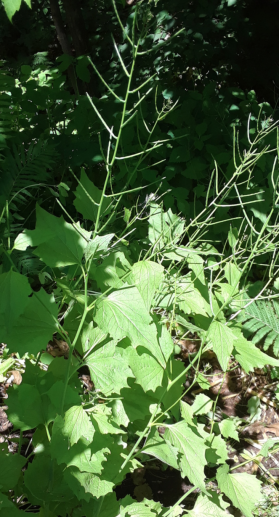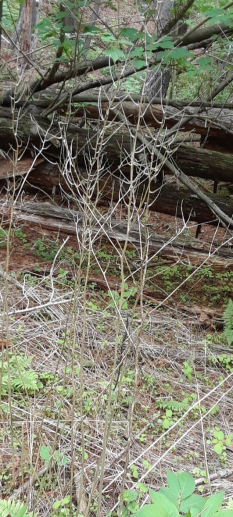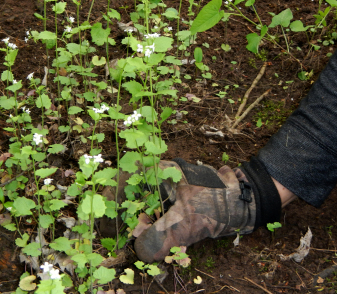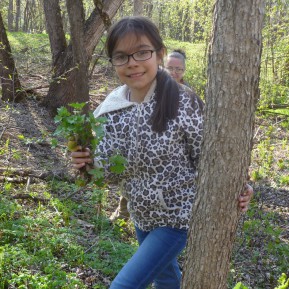Garlic Mustard (Alliaria petiolata)
Garlic mustard was first discovered in 2002 within the NCWMA region (Ashland, Bayfield, Douglas, and Iron Counties). Since that time, new populations have popped up primarily in yards or along trails. Garlic mustard can spread quickly and take-over the understory of rich hardwood forests. In our area it has spread especially along the flood plains of a few rivers.
The NCWMA would like to know about new infestations so that we can assist with treating garlic mustard and survey to find additional infestations in the area. If you see garlic mustard, please report it and hand-pull plants before they go to seed if you can. If it is treated quickly, it can be contained.
Read below for information about identifying garlic mustard and understanding why this species is such a high priority species for the NCWMA. Volunteers are needed each spring to help with hand-pulling garlic mustard. This is a great group activity for all age groups.
Identification of Garlic Mustard
- All parts of the plant smell like garlic.
- Plants live two years. (It has a biennial life cycle.)
YEAR TWO
- Soon after the snow melts, the year-old plants "bolt" by growing a stem in the early spring to 1 to 3 feet tall.
- Leaves develop alternately along the stem. They are toothed and triangular-shaped.
- Flowers develop in clusters on the top of plants soon after bolting. The flowers are small, white, and have four petals.
- Seeds develop in long narrow capsules called siliques.
- Plants die after the seeds disperse.
Managing Garlic Mustard across the NCWMA
The map above shows the known garlic mustard infestations in the region. Most of these infestations have been treated. The two largest sites of garlic mustard are along the Montreal River in Hurley, Wisconsin and along the Bad River floodplain in Mellen, Wisconsin. The NCWMA has assisted with treatments and montitoring of these two infestations. Learn more about these projects by clicking the links below.
Watch our Video about Garlic Mustard and its Management in the NCWMA
Garlic Mustard is a High Priority Invasive Species in the NCWMA
1. Garlic Mustard Spreads Fast.
-
Each plant produces 100s of seeds that are viable for 5 to 7 years.
-
Garlic mustard has a long growing season
- Stays green through winter
- Starts growing early in the spring and late in fall
-
Seeds can be spread easily by soil in shoes, tires, deer.
-
Plants have no known pests in North America.
-
Allelopathic: Produces chemicals that damage growth of neighboring plants
Managing Garlic Mustard Takes a Group Effort
- Hand-pulling in the spring is an effective manner to control small populations.
- Hand-pulling is labor intensive and must be done during a short window before plants go to seed.
- Treating plants with herbicide in the early spring or late fall can kill garlic mustard plants before they flower and develop seed. Treatments at these times of the year will decrease impacts on non-target plants.
Volunteers are Needed!
- The NCWMA is looking for volunteers to hand-pull garlic mustard in the spring.
- This is a great way for kids and adults to learn about invasive species and make a difference.
- The NCWMA organizes hand-pulling events throughout the region.
- Get on our e-mail list and like us on our Facebook page to get updates of events

